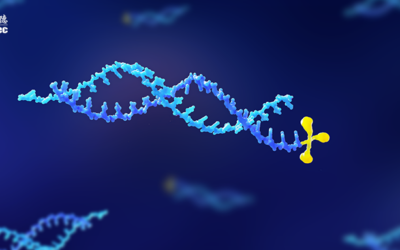Pharmaceutical manufacturers have used single-use products since the 1990s, when plastic filters and tubing were integrated with stainless steel bioreactors, revolutionizing biomanufacturing. Prior to this breakthrough, manufacturers were forced to clean and prepare steel containers for reuse, an inefficient, time-consuming and costly endeavor.
The shift to disposable, single-use systems (SUSs) means most drugs today are developed using plastic bags, tubing, bottles, connectors, pumps, sensors, filters, valves and more. Product quality has improved, and production costs have declined.
But SUSs are not perfect. They may be cost-effective and help produce high-quality pharmaceuticals, but they come with challenges inherent in using any plastic materials.
Why Extractable/Leachable Testing is Crucial
There’s always a risk when using any plastic component: the chemicals within can leach out and block the desired effect of a biologic. These chemicals can inhibit cell growth, have mutagenic or carcinogenic impacts, and interact with pharmaceutical ingredients. And this is true for all plastics, including those with a long history of clinical use.
One example is polypropylene, which is used in more than 170 health care products, including SUSs. There are approximately 35 chemicals expected as common extractables of polypropylene, and some of them can risk patient safety.
To identify these risks, manufacturers carry out extractable/leachable (E/L) studies. Extractables are determined through the interaction of the SUS and aggressive solvents, to generate “worst-case” data. Leachable studies use direct contact between drugs and the SUS under more “normal” conditions.
Drug manufacturers need to fully understand the materials and manufacturing process for each SUS if they are to properly identify risk. And they also need to remember, not all plastics are made equal. The type of plastic used, contact duration and temperature, and proximity to the final drug product all have a huge impact.
The Right Analytical Testing for E/L Studies
SUS supplier may provide extractables information, but leachables data still needs to be established for full safety. Multiple analytical techniques are used to reveal the full range of extracted chemicals associated with a SUS. Some of the more common methods include:
- Inductively Coupled Plasma (ICP) to detect and identify elements/metals
- Headspace Gas Chromatography-Mass Spectrometry (HSGC-MS) to detect volatile compounds
- Gas Chromatography-Mass Spectrometry (GC-MS) to detect semi-volatile compounds
- Liquid Chromatography-Mass Spectrometry (LC-MS) to detect semi to non-volatile compounds
Avoid Shortcuts
Many laboratories promote their E/L testing capabilities, but the quality of reporting from labs can differ significantly. For example, some laboratories don’t commit to identifying all compounds as part of their E/L program. If identification is offered as an additional service, it is essential manufacturers understand the extent to which the lab will identify compounds.
Any kinds of unknowns are unacceptable if your goal is to identify all potential hazards. It takes a laboratory partner who is committed and willing to invest the necessary resources to achieve complete identification. By thoroughly vetting your lab partner, you can avoid surprises and delays.
Safety Assessment/Toxicology Risk Assessment
The safety and effectiveness of an SUS—and its regulatory success—requires collaboration between biomanufacturers, chemists, and toxicologists. A thorough safety assessment/toxicological risk assessment evaluates all of the compounds detected in the chemistry report.
If there’s a compound that cannot be identified, it must be assessed at the most conservative level of risk, often leading to a margin of safety less than 1. If unknowns cannot be identified or if compounds with potential risk cannot be mitigated, an alternative SUS may be needed.
A Shifting Regulatory Landscape
The BioPhorum Operations Group (BPOG) aimed to provide some guidance to biomanufacturers in 2014 when it published a standardized extractable protocol. The goal of the “BPOG protocol” was to prepare test articles for regulatory submission. In 2020, BPOG published a revised protocol based on what it learned from data generated under the original version.
More recently, U.S. Pharmacopeia (USP) issued two new chapters (665/1665) on production equipment and patient safety for polymers used in biomanufacturing. USP <665> is “harmonized” with BPOG’s 2020 guidance, meaning manufacturers that have collected data using the most recent BPOG protocol have likely met the USP’s new requirements.
Most regulatory bodies want to see E/L data and may also ask for a safety assessment/toxicology risk assessment as well. China already requires E/L testing for SUSs, and the European Medicines Agency (EMA) and International Council on Harmonization (ICH) have begun to expect E/L testing on SUSs.
Final Word
Change is coming fast to the way we use SUSs, and manufacturers need to make sure they take the appropriate steps to lower potential risks of leachable contamination. Advanced chemistry and toxicological capabilities, coupled with open communication between biomanufacturers and regulators, will form the cornerstone of building safe and effective SUS.
Manufacturers need to have the capability to assess the risk of using SUS and be able to mitigate those risks with analytical chemistry. This may eventually become a requirement of regulators worldwide, so manufacturers will benefit enormously from collaboration with a laboratory testing partner who can design studies and conduct testing that will achieve these goals.
As a global company with operations across Asia, Europe, and North America, WuXi AppTec provides a broad portfolio of R&D and manufacturing services that enable global pharmaceutical and healthcare industry to advance discoveries and deliver groundbreaking treatments to patients. Through its unique business models, WuXi AppTec’s integrated, end-to-end services include chemistry drug CRDMO (Contract Research, Development and Manufacturing Organization), biology discovery, preclinical testing and clinical research services, cell and gene therapies CTDMO (Contract Testing, Development and Manufacturing Organization), helping customers improve the productivity of advancing healthcare products through cost-effective and efficient solutions. WuXi AppTec received AA ESG rating from MSCI in 2021 and its open-access platform is enabling more than 5,850 collaborators from over 30 countries to improve the health of those in need – and to realize the vision that “every drug can be made and every disease can be treated.”


